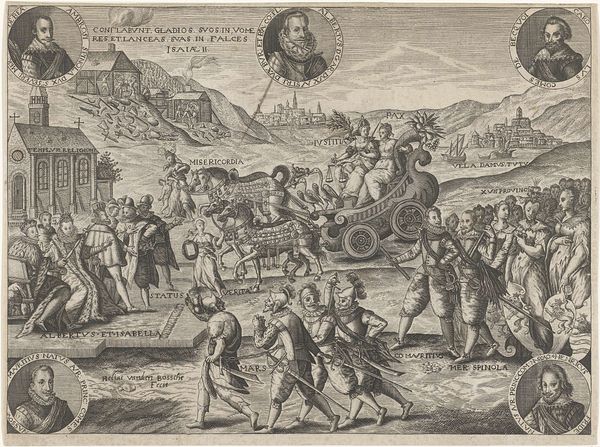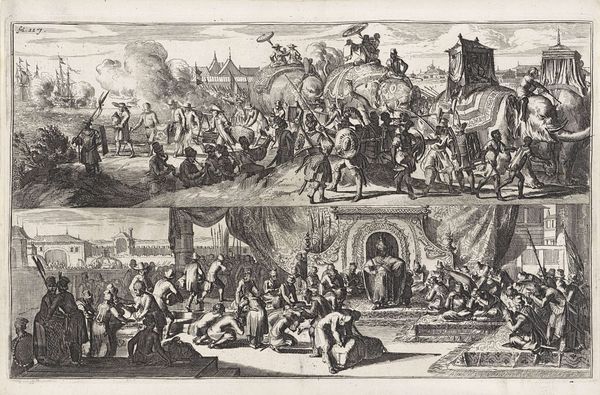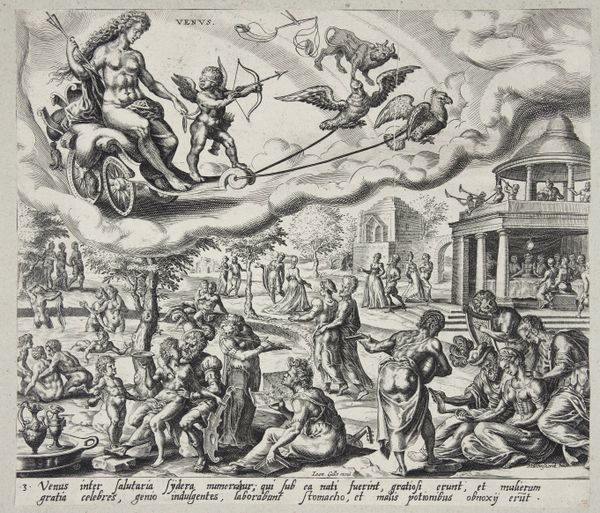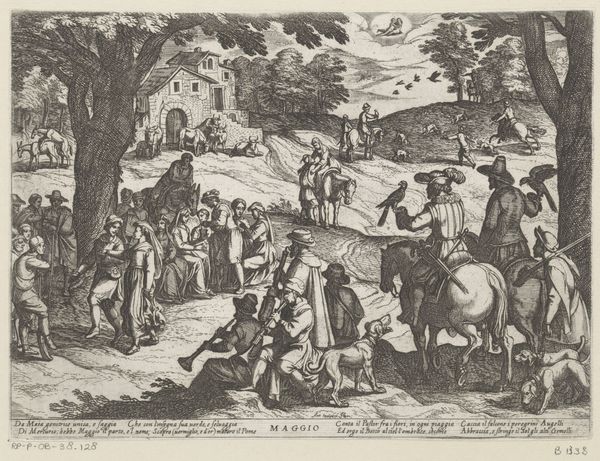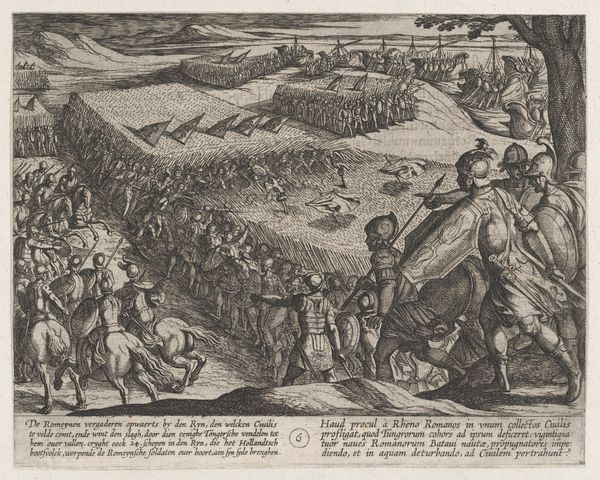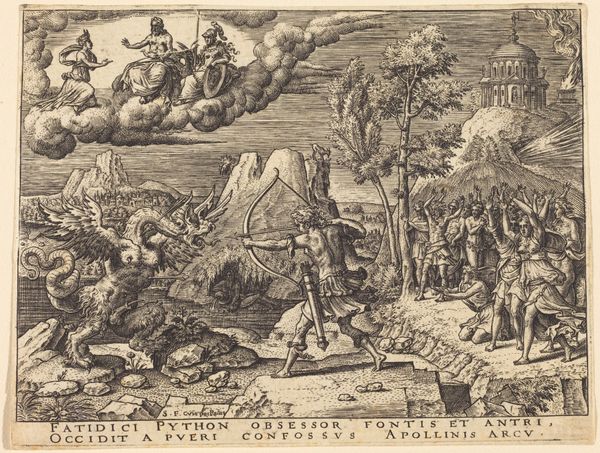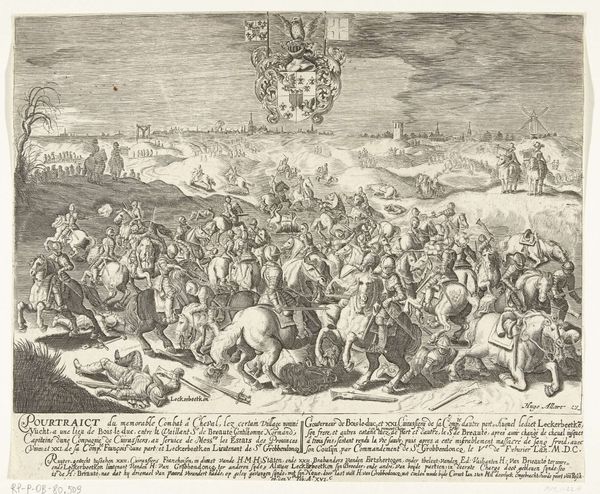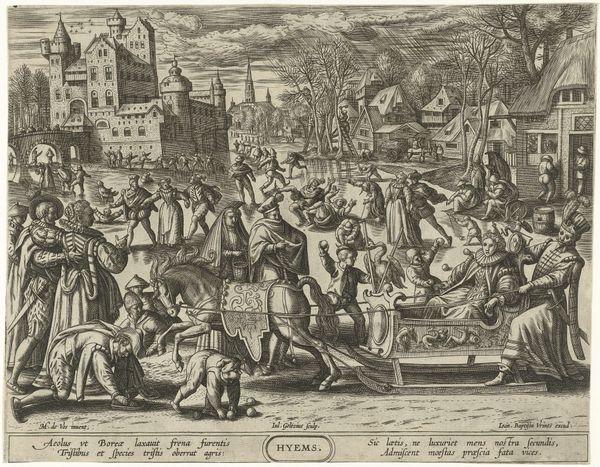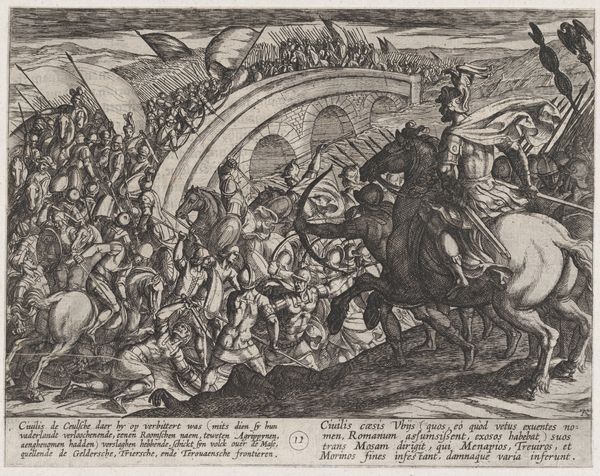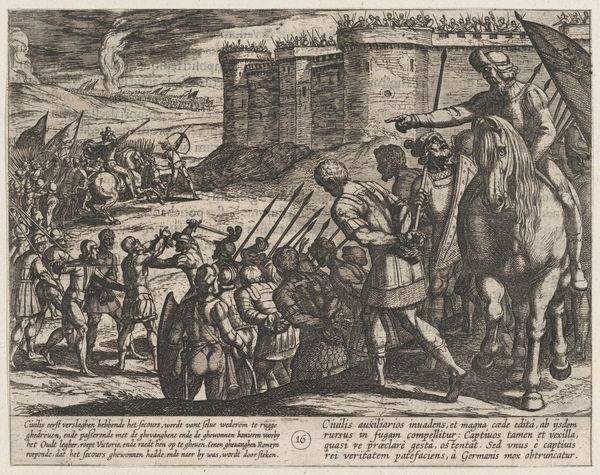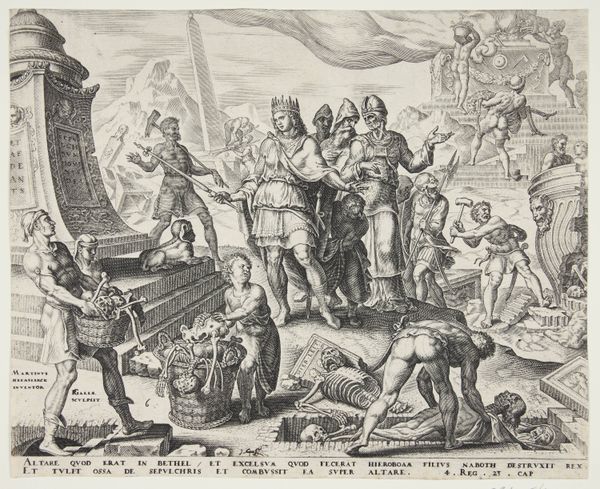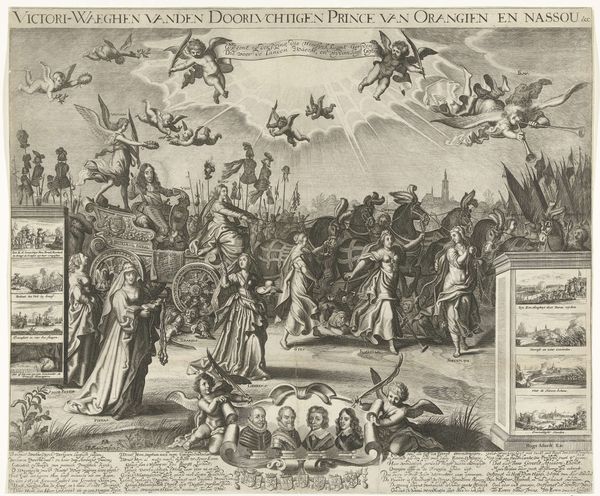
print, engraving
#
allegory
#
baroque
# print
#
landscape
#
cityscape
#
history-painting
#
engraving
Dimensions: height 284 mm, width 340 mm
Copyright: Rijks Museum: Open Domain
Curator: Welcome. Today we will be examining Willem de Haen's "Allegorie op het Bestand en de vereniging der partijen, 1609," created in 1609. The piece, currently held in the Rijksmuseum, is a meticulously crafted print employing engraving techniques. Editor: It's dense! There’s almost too much happening here, but my initial feeling is one of forced optimism. Despite the busy composition, the subdued tones create a somewhat muted celebratory atmosphere. Curator: Precisely. De Haen uses allegorical figures to represent the Twelve Years' Truce, a significant moment in Dutch history. We see figures like Justice, Peace, and Truth being drawn in a chariot, pulled by characters embodying the Dutch provinces. It speaks to unity and prosperity, key ideals of the time. Editor: But is it truly celebrating unity, or masking deep divisions? Notice how Mars is being pushed away, yet he's still present. This evokes a complicated question. Were there truly ever any intentions toward actual long-term conflict resolution between The Netherlands and Spain? What's happening on the battlefield behind, where lives seem actively still being claimed even in a scene of peace and reconciliation? Curator: Formally, we can observe a carefully constructed composition. The placement of figures, the linear perspective, and the detailed rendering of textures all contribute to a balanced, albeit complex, image. Semiotically, each figure carries a specific weight, creating layers of meaning intended to reinforce the political narrative. Editor: The placement of the portraits, specifically, speaks volumes. With portraits of Prince Mauritz, Albert, and Isabella around the main stage, each watches over the actions, embodying different perspectives, values, and goals, all ultimately tied together within their society. In its effort to represent unified peace and wealth for everyone, the absence of portraits representing more of the masses sends a clear message that a select few would stand to benefit more greatly from a cessation of war than all. Curator: It encapsulates a moment of cautious hope amidst ongoing tensions. De Haen masterfully translated a political agenda into a visually engaging print, showcasing a structured arrangement of historical figures, mythical personifications, and landscape details, all pointing toward a harmonious resolution. Editor: De Haen provides us with a valuable window into the construction of national identity and the political maneuvering of the time. His artwork doesn't just show peace; it performs peace, urging its viewers to actively partake in this new political reality while asking crucial questions around equity.
Comments
No comments
Be the first to comment and join the conversation on the ultimate creative platform.
